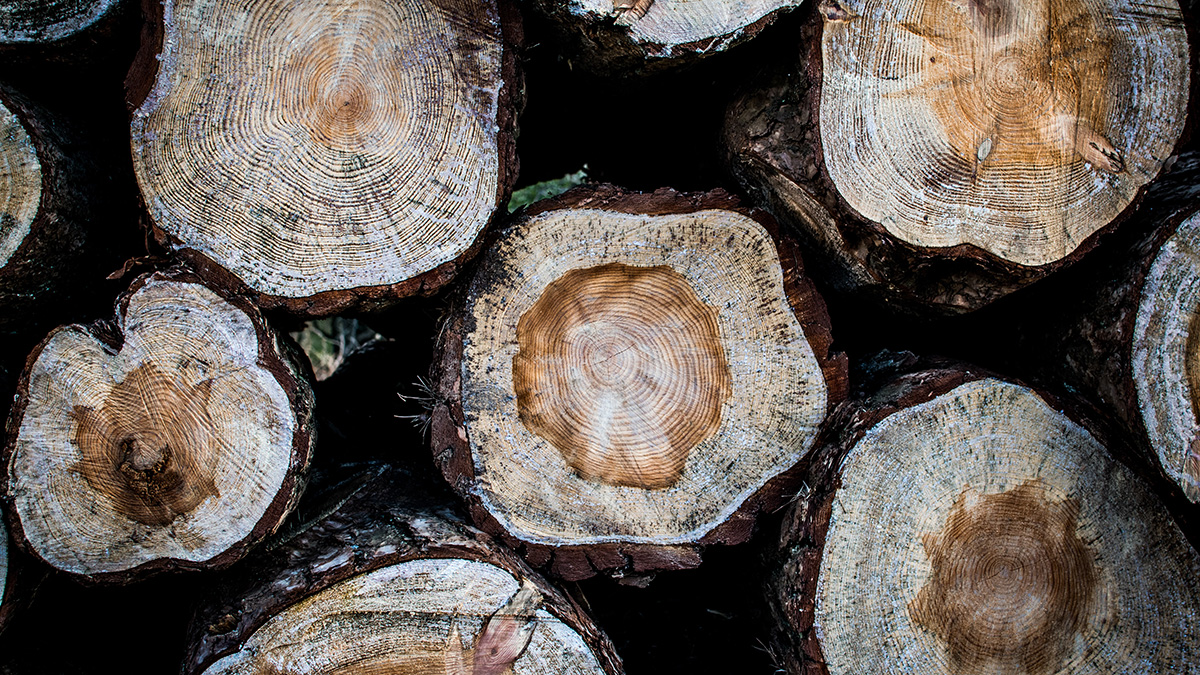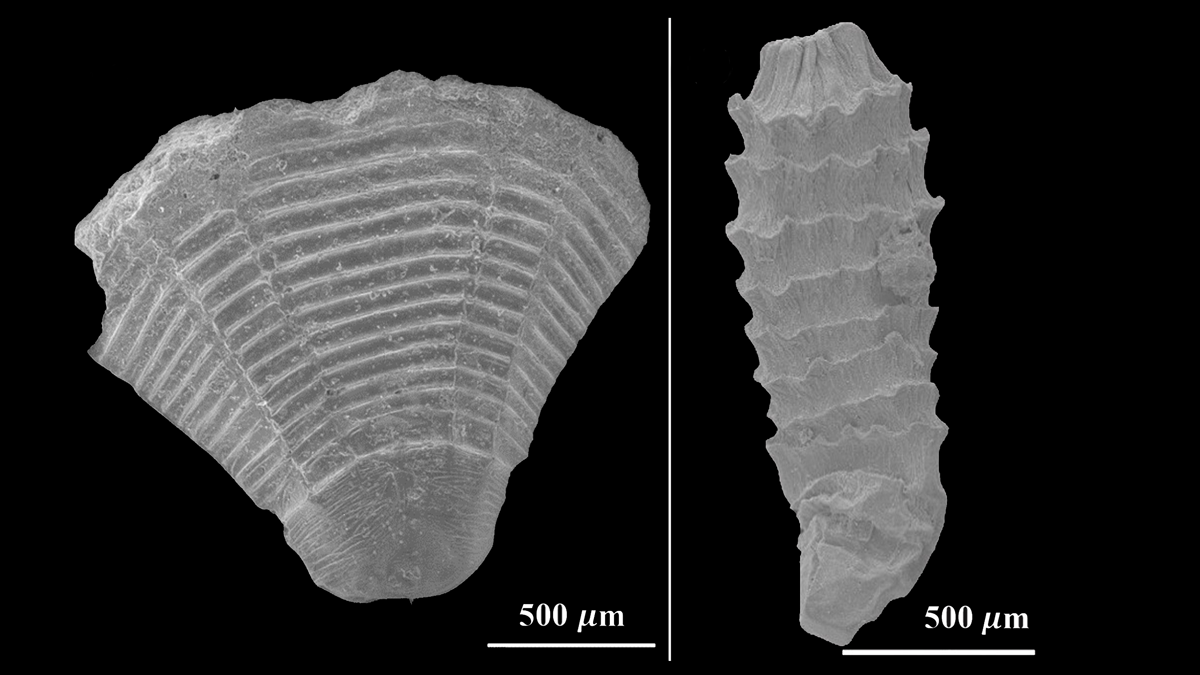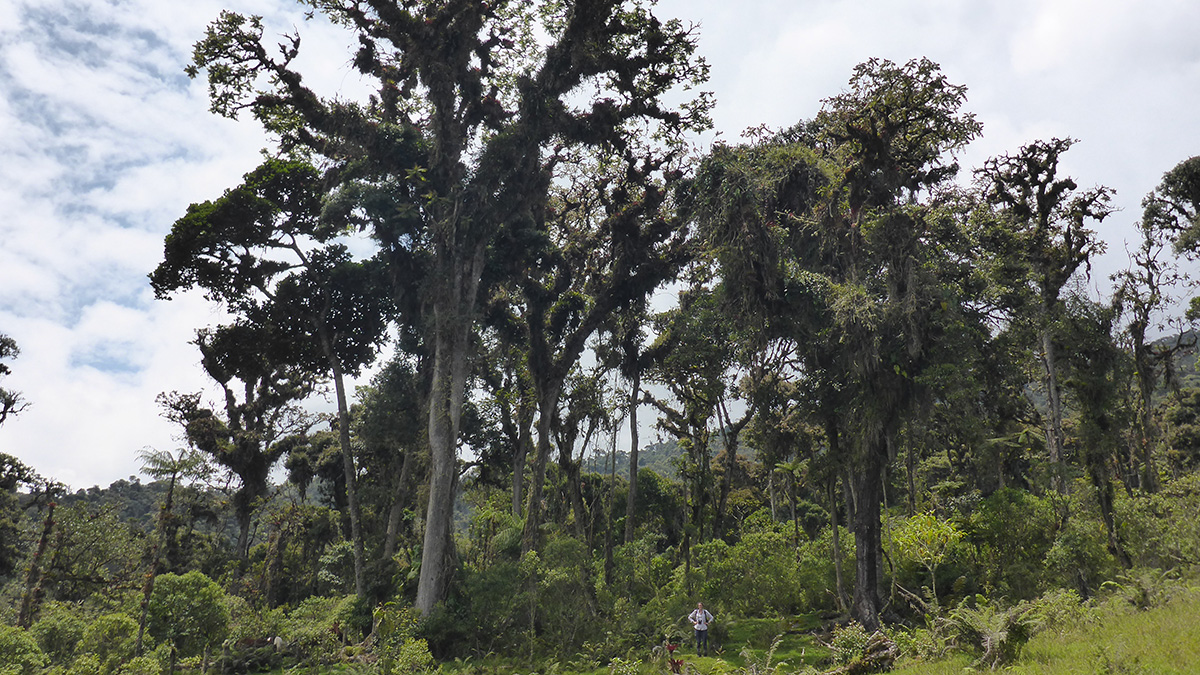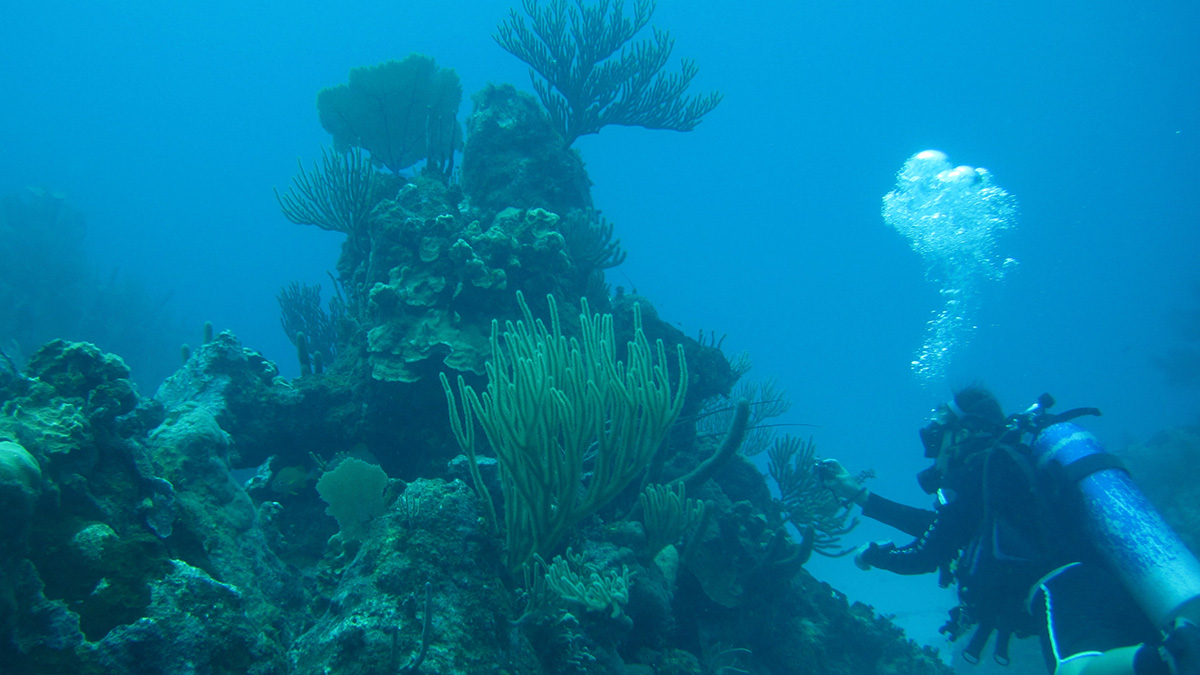Slow carbon seep long after eruptions have ceased could shape the carbon cycle on geological timescales.
Journal of Geophysical Research: Biogeosciences
Tree Ring Width Predicted by Machine Learning
When predicting a tree’s annual growth, consider the whole weather system and not just the sum of its parts.
Munching Moose Cool Forest Floors
By making clear-cut forests patchier, moose create a reflective surface that bounces back sunlight and keeps temperatures down.
Bacteria Travel Thousands of Kilometers on Airborne Dust
As winds pick up dirt and sand, they also pick up any microbes adhering to those particles, potentially introducing them to new locations.
Fluid Dynamics of Tiny, Ancient Marine Animals
Water flow simulations using 3D models of fossils yield new clues to the evolution of organisms known as medusozoans.
Warming and Agitation Intensify Seagrass Meadow Carbon Fluxes
Carbon dioxide emissions surge in sediments when temperature and agitation increase, both of which are likely to continue rising in degraded Mediterranean seagrass meadows.
Amazon Basin Tree Rings Hold a Record of the Region’s Rainfall
New research provides a 200-year reconstruction of interannual rainfall in the Amazon basin using oxygen isotopes preserved in tree rings in Ecuador and Bolivia.
The Burning Tundra
As wildfires blaze through the Arctic, scientists examine the role of landscape characteristics on wildfire ecosystem responses in northern aquatic ecosystems.
Unchecked Ocean Warming Threatens Many Gulf and Caribbean Corals
Gulf of Mexico and Caribbean sea surface temperatures could surpass coral bleaching thresholds in the region as soon as 2050, motivating the need for prompt mitigation, researchers say.










